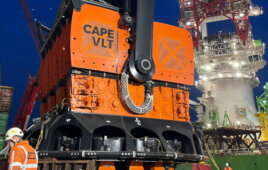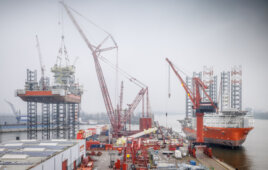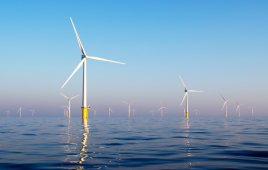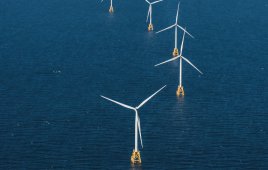The IRS recently clarified a section of the PTC law that pertains to wind farm financing. In particular, the Service added a new rule that will enable some wind farms that might not have otherwise qualified as eligible for PTCs. Under current law a wind farm had to be in service or under construction as of December 31, 2013 to be eligible for PTCs. Last year the IRS published some rules that grandfathered projects as long as the sponsor spent at least 5% of the cost before year-end 2013. The new IRS notice seems to reduce this 5% “safe harbor” to 3%. But there’s a twist says Mark Regante, a partner with the law firm Millbank Tweed, Hadley & McCloy.
(www.milbank.com). In a discussion on the IRS clarification, Regante also explained how yieldcos and master limited partnerships fit into wind-farm financing.
“The percent reduction is a little more complicated than it sounds,” says Regante. “The IRS announced a new way of interpreting the percentage figures. First, the IRS treats each turbine as a separate facility. Now, imagine you have a wind farm of 100 turbines that will cost $100 million or $1 million per turbine. And suppose you spend $3 million on general design work and permitting before the required date, things that would normally be spread over the entire project. Of that $3 million, based on their being 100 turbines, 1% would be allocable to each turbine. So when you complete this work, you have not really spent 5% on each turbine by January 1, but only 3%. So the IRS recently said that in this situation, it knows you spent $3 million, which is 5% of $60 million. So it will let $60 million dollars worth of turbines (or 60% of them) qualify for the PTC.”
For qualifying turbines and other renewable energy projects, owners can claim either PTCs at 2.3 cents/kWh for ten years or an up-front 30% investment tax credit (ITC). These rules do not apply to solar projects. Those are eligible for the 30% ITC as long they are placed in service by 2017.
With reference to yieldcos, Regante says the attraction is in their yield. “Investors are looking for yields these days. A savings account might earn 0.5% or less, while yieldcos generally predict yields in excess of 3%, supported by projects with long-term power sales contracts. It’s a cheap way to raise capital. If a developer went to a bank for financing, it would pay 6% whereas a yieldco only costs it 3%.” Note that because yieldcos are corporate taxpayers, a key to their ability to pay those projected dividends is that they will use some of the tax benefits from the projects they own to shelter their own tax liabilities.”
Yieldcos have been successful, and in fact, oversubscribed, says Regante. “The percent reduction is a little more complicated than it sounds,” says Regante.
Master limited partnerships, or MLPs, are also publically offered investments. “Corporations pay tax on their profits or income and that puts a drag on cash flow. With an MLP, you’re buying an interest in a partnership that pays no tax. So the cash flow moves through the MLP with no tax burden. The problem for renewable energy is that MLPs must earn 90% of their income from qualifying sources, and those do not include income from power-sales contracts. So a change in law is required that would let MLPs invest directly in renewable-energy projects.
One MLP, called Brookfield Renewable Energy partners, invests in renewables, but through a corporation. It is a different structure in which the MLP owns shares in a corporation that owns renewable-energy projects. “It’s actually more like a yieldco, in an MLP format, which suffers from investing through a corporation that might have a tax burden in the future,” he says.
Also, most MLPs have been in oil and gas. ”Qualifying income is from depletable properties and wind is not depletable. When drilling for oil, you can get a depletable deduction. So the statute targets as qualifying income businesses that deal with depletable property,” he says. So a change in law is needed to include investments in renewable energy property.
Regante says there have been half-hearted efforts to change the law, but the few bills proposed over the last several years have not gone anywhere. “It’s a controversial subject. You might also have read news of companies relocating to other countries to avoid paying income tax. The MLP is a similar notion and people in Congress are concerned that the tax base is declining. So it is likely that if tax credits are available, Congress won’t expand the MLP provisions. We might see an expiration of the PTC swapped for an expansion of MLP rules. Although opposed by the wind industry, Congress might see this as an acceptable compromise.”
Are there other trends in financing? “I expect to continue to see what have become customary forms of tax equity capital raising structures, including so-called partnership flip transactions and various lease structures. These structures allow large corporates to invest in renewables and supplement their returns with tax benefits, while the sponsors give up a claim to these benefits in exchange for a greater share of project cash flow. The innovation we are seeing is that the sponsors are now putting their retained interests in those projects into their yieldcos, effectively combining the two structures. WPE
Filed Under: Financing, News, Policy





